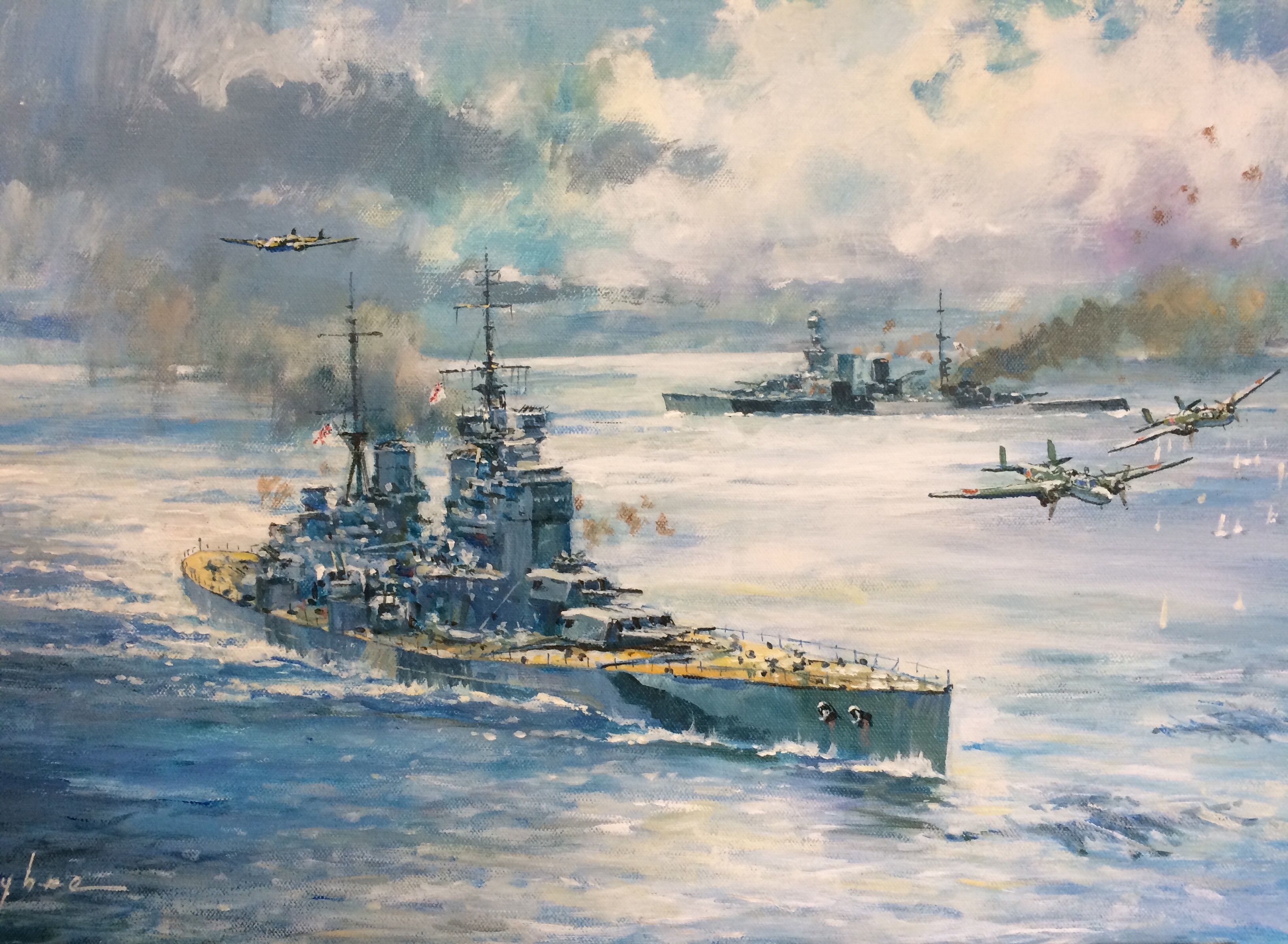The Loss of Force Z (on this day in history)
 An artist’s rendition of Prince of Wales (left) and Repulse (right) under attack by Japanese aircraft.
An artist’s rendition of Prince of Wales (left) and Repulse (right) under attack by Japanese aircraft.
On this day in 1941, just three days after the attack on Pearl Harbor, Japanese land-based aircraft sank the Renown class battlecruiser Repulse and King-George-V class battleship Prince of Wales in the South-China Sea. While the men of Force Z fought valiantly to repel the Japanese aircraft and avoid their torpedoes and bombs, both capital ships ultimately succumbed to the aerial onslaught, with hundreds of casualties; even worse, of eighty-eight Japanese aircraft involved in the attack, only four were destroyed (using figures from Wikipedia). Somewhat ironically, this triumph of aircraft over some of the Royal Navy’s best capital ships was likely just as, if not more troublesome to the Japanese than the British. While the British were evidently shocked that a modern battleship and modernized battlecruiser had been sunk in open ocean by aircraft (even worse in their eyes, by Japanese pilots), the victory had serious implications for Japan’s naval strategy and tactics. Had the IJN not just spent the prior decade designing and building the largest, most-powerfully armed and best-protected class of fast-battleships in the world? With the explicit intent of giving the IJN the decisive edge in the decisive battle they planned to fight against the American battle line, which at best they could attrit through airstrikes? Did the sinking of Repulse and Prince of Wales, capable warships of the British Empire, not imply the same fate could befall the ships of the Yamato class? I am currently reading John Toland’s The Rising Sun: The Decline and Fall of the Japanese Empire, 1936-45, in which the events of 10 December, 1941, are described in great detail; with the above questions in mind, I find it extraordinarily interesting to consider the effects of this action on the Japanese Naval leadership. While not as well known in the United States as the events of December 7, I think the attack on Force Z on December 10, 1941, and the courage displayed by the men involved, are deserving of our remembrance. Below is a poem I wrote on the subject.
“An Ode to Force Z”
‘Twas 10 December ‘41, Two dreadnoughts underway; Their mission: show the Rising Sun, That Britain still held sway.
-
Their names were H.M.S Repulse, A swift, sleek battlecruiser, And young and mighty Prince of Wales, Completed ten months prior.
-
Combined they formed the fast Force Z, Destroyers at their sides; Their nakedness they failed to see, Through fog of hubris; pride.
-
Those pesky birds just came and came, No heed the hail of fire; Their engines buzzed like angry bees, A swarm never to tire.
-
For then Repulse failed to Repulse, The fish that struck below; Torpedoes struck, her hull convulsed, And so went down Repulse.
-
The Prince of Wales was next to go, She lived a year then died; Her loss was quite the savage blow, To British naval pride.
-
How could those men have lost such face? To such a damned inferior race? Their ships had ruled the waves for years, Yet there stood Churchill, eyes in tears.
-
Trafalgar’s spell had done them in, Superbia the fatal sin; For Nelson’s glory, admirals yearned, Those poor brave fools, they’d never learned.
Sources: Kaigun: Strategy, Tactics, and Technology in the Imperial Japanese Navy, 1887-1941, by Evans and Peattie
The Rising Sun: The Decline and Fall of the Japanese Empire, 1936-45 by John Toland
Sinking of Prince of Wales and Repulse
Unless otherwise stated, no images on this site are my own.
Copyright © feargodanddreadnought.com. All rights reserved.